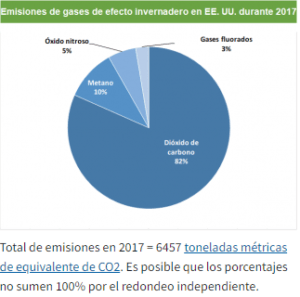The paradox between electric cars and lithium batteries.
The fame of global warming is not free, it is evidenced by entities such as NASA[1], it is defined as "the constant and notable increase in temperature on the earth's surface since the industrial revolution", but in that fame it denotes that the main actors, the protagonists are human beings, our responsibility as users of industries during climate change, would be more than obvious in light of these concepts, and we need each other to preserve part of the ecosystems, natural resources and biodiversity.
Let's talk about what we have done so far: almost all human activities contribute in some way to global warming, since our comfort depends on Energy. If we start to think, drink something hot, be comfortable, watch TV, move, communicate through our mobile, etc., it requires Energy and fuel consumption for it. Electricity generation from thermal sources, transportation, industry (mining, manufacturing, refining, food production, etc.), agriculture, commerce, and even things we do in our homes (consult this text if you wish to expand) . Everything seems to indicate that if we are the protagonists, the use of fossil fuels is one of the antagonists in this problem, which is why it is urgent for us to make an energy transition towards more environmentally friendly sources that reduce or eliminate gas emissions. greenhouse effect causing the increase in global temperature.
When we notice the complexity of the issue and ask ourselves what we can do to contribute to solutions, we see that the actions we can take as ordinary people are related to our habits, how we consume energy in our homes, the way we eat, and how we transport ourselves, to mention a few examples.
In this text we will focus on the issue of transportation: some people contribute by choosing to use public transportation, bicycles, electric vehicles, or even walking. On many occasions, mobility needs or long distances mean that those interested in contributing positively to climate change with their way of transporting opt for electric vehicles such as skateboards, motorcycles or cars. They are media that do not emit carbon dioxide in operation, which makes them a very convenient and clean option, or so it is often believed when advertised or purchased. Although they do not produce polluting emissions when they are operated, reality shows us some environmental disadvantages of this type of vehicle, including its manufacturing process and the energy required to manufacture lithium batteries, which we will discuss below.
Manufacture of electric cars and lithium batteries
It is estimated that, during the manufacture of a conventional car powered by fossil fuels, between 7 and 10 tons of CO2 are emitted, an amount similar to that emitted in the manufacture of an electric vehicle. However, for every kilowatt hour (kWh) of battery capacity, around 150 kilograms of carbon dioxide can be emitted during battery manufacturing. For a car that requires charging every 450 kilometers, 60 kWh may be needed, which implies emissions of almost 9 additional tons of CO2 during the manufacture of the battery, for a total of between 16 and 19 tons of greenhouse gases emitted for it to run. you can have a new electric car.
Batteries require electricity to be charged, making the operation of an electric vehicle as "green" as the energy source that is used to generate the electricity.
Lithium is the quintessential material for manufacturing batteries for all types of electronic devices, such as digital watches, toys, computers, cell phones, and of course, electric vehicles. This metal allows for fast charging, is more durable, and has a higher energy density compared to other technologies[2], which is a property that allows more energy to be stored for a longer amount of time, in a lighter package (. However, all these advantages are clouded by various factors, ranging from obtaining the mineral to its final disposal.
Lithium is mainly found in South America, Australia and China. In Chile, for example, lithium is extracted by evaporation of groundwater, in places called salt flats. In these sites, it is suspected that the extraction of the mineral has affected the regular cycles of the water, which has led to droughts that endanger agriculture and livestock. The affectation[3] also extends to damage to the soil, loss of biodiversity, damage to various ecosystem functions, air pollution, and ironically, an increase in global warming () The process itself uses large amounts of water that can no longer be used by the communities near the mining sites. The batteries also require other scarce and toxic minerals, such as cobalt, which is found in countries like the Congo, where this material is collected by men and women without protection measures for the task, additionally there are children exploited for its collection, violating the rights of children in accordance with NGOs (Enlarge in this link, if you wish).
Lithium batteries have a limited number of recharges. Once the useful life of a lithium battery has expired, it should not be thrown into traditional waste deposits, as they can cause fires, but should be separated and recycled properly (See here for more information).
In a country like Colombia, hydroelectric plants are the largest generators of electrical energy, which have minimal or no emissions, however they bring other types of environmental effects such as habitat fragmentation or reduction of native species, among others. If the generating source of electricity is gas, coal or any other type of fossil fuel, then we have a complete paradox, since our car does not generate emissions when running, but producing the energy required for it to operate has high emissions. Other sources that are considered are nuclear plants that, although they do not emit CO2, are known to have other types of environmental risks as a result of the use of highly polluting radioactive materials.
The direction is right to switch to renewable energy and the best way to ensure the "green" operation of an electric vehicle is to recharge its batteries with renewable sources, such as solar, wind or even geothermal energy.
Several of the challenges presented by renewable energies are their low availability at any time, their high initial cost and their low efficiency, which limits being able to meet high energy demands, and forces us to research and develop more in these fields to increase their efficiency. feasibility, capacity and feasibility.
final considerations
Electricity is seen as a vital energy ally for a future free of CO2 emissions. However, better ways of generating and storing it need to be developed. Many of the problems mentioned in this text not only involve electric cars, but almost any electronic device that we use in our daily lives, such as cell phones, watches, or laptops.
Different investigations that we tackle include hydrogen batteries, which, for example, could help us convert the most common element in the universe into electricity, without greenhouse gas emissions. Batteries from magnesium, manganese, sodium, or solid state
Here we do not seek to demonize the electric vehicle, we understand and support its transitory role within a zero carbon future, but we also understand that there are characteristics within its construction and operation that are not friendly to the environment, and that must be corrected in The near future. A truly green electric car must be the goal, it is the dream and it must be the reality with which we transport ourselves tomorrow.
Taken from https://climate.nasa.gov. January 2023
[2] Taken from https://www.apple.com/batteries/why-lithium-ion/ accessed January 2023
[3] affectation
Reference


